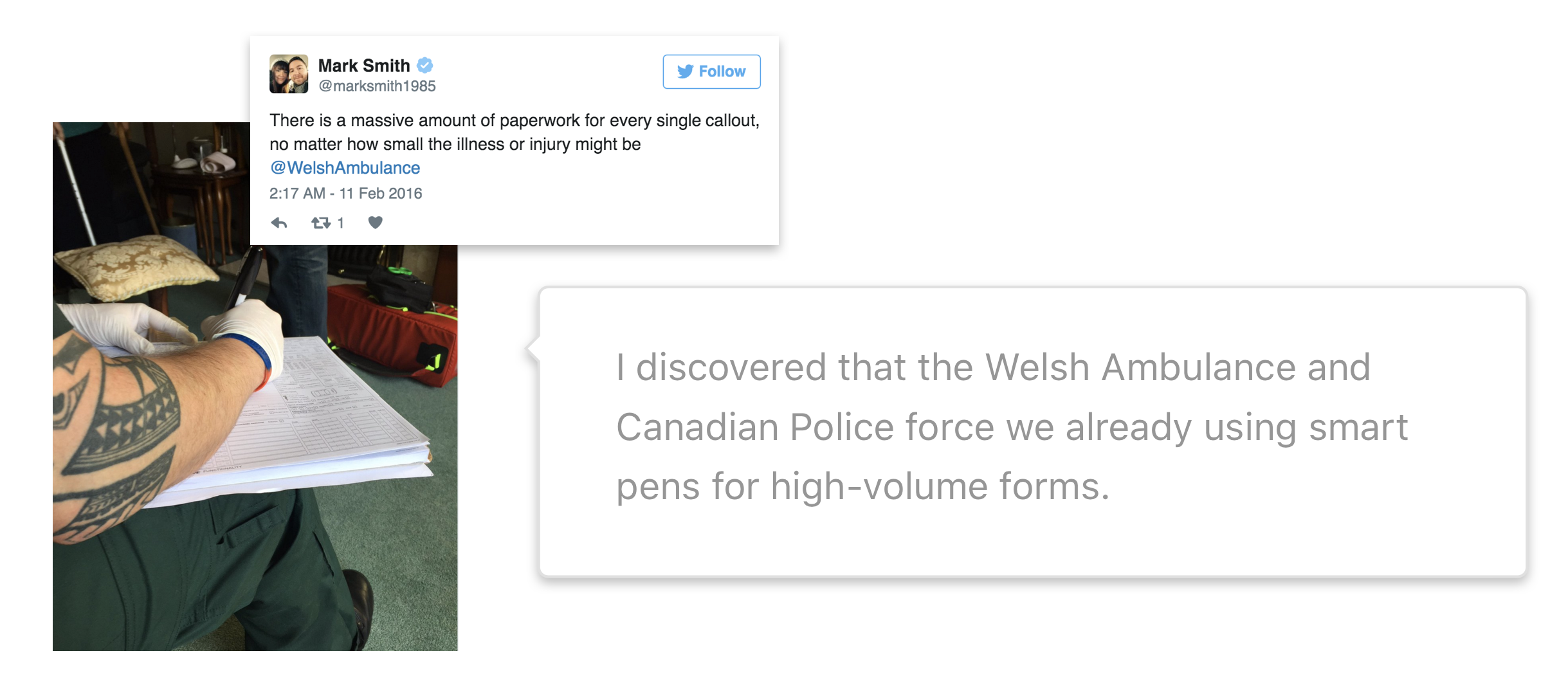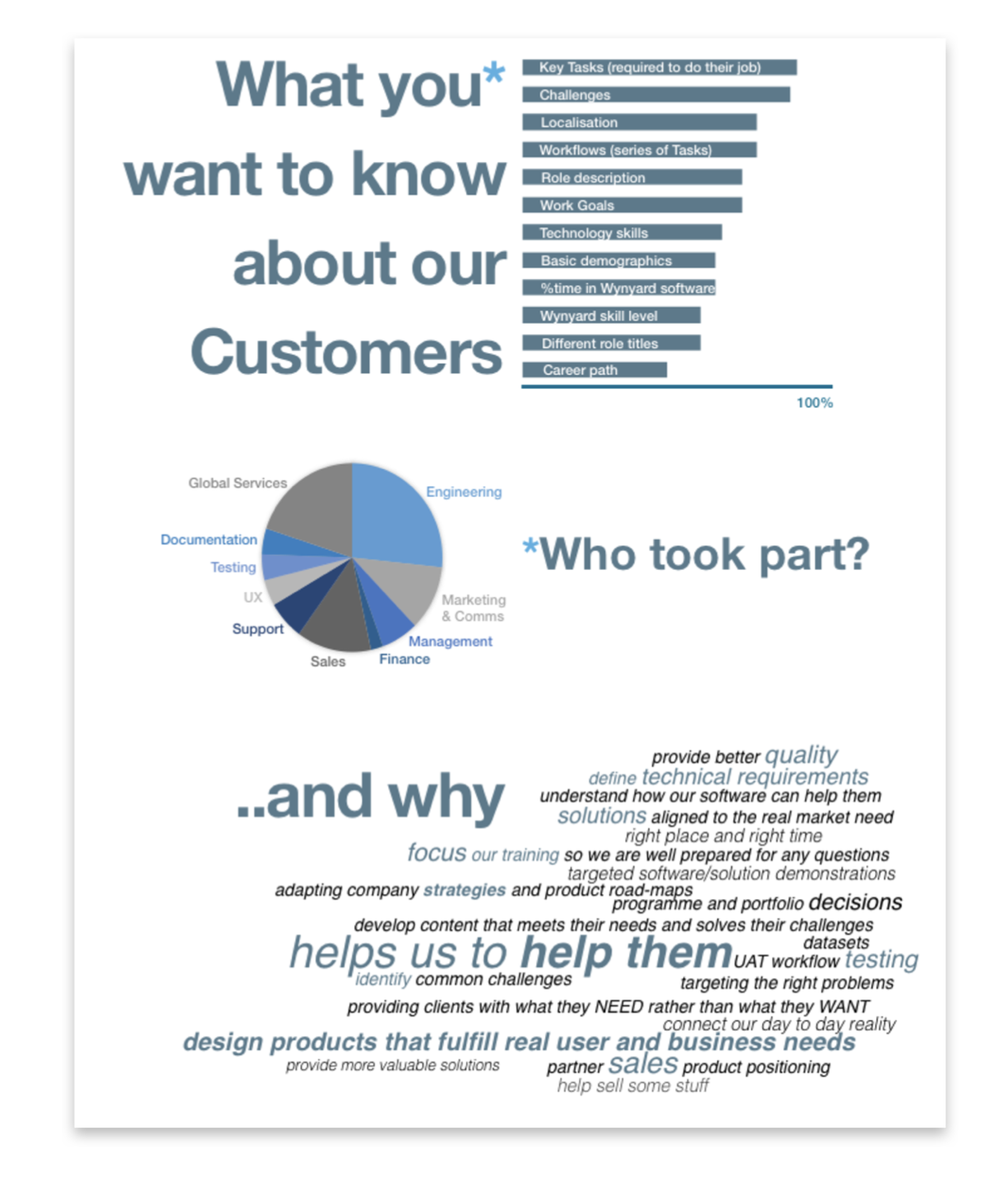Wynyard Group
Software for solving crime
Wynyard Group 2015-2016
I was a User Experience Designer in the UX team. We translated research and requirements into a product experience that helped Detectives and Intelligence Analysts solve and prevent crime.
Also, I delivered customer presentations and demos, documentation and analysis work that supported other facets of the organisation.
Below is a selection of projects, designs, research and learnings:
- Research Field Study: National Police Agency Sex Offender Register
- Concept for a Mobile Solution: “Write Once”
- Personas and User Profiles
- Product Features and Workflow Design: Entering and Linking Evidence and Information
- Design leadership: Product Management Support and Idea Generation
Research field study: National Police Agency Sex Offender Register
Background
A cross government initiative led by a National Police Agency to prevent child sex offenders from re-offending through a monitoring/risk management process.
Wynyard supplied Investigative Case Management software to the National Police Agency, and had just set up a Dashboard feature for the Case Managers to manage their Child Sex Offenders (CSO’s).
Case Management process evolution infographic.
Design opportunity
We met with the stakeholders, and I performed a demo of our new web interface, and discussed what UX was and what research we would like to do with their end users – Case Managers. (Each sex offender is referred to as a “Case”).
The National Police Agency agreed to a 2-day field study across 3 locations in Auckland and Wellington with multiple of their Case Managers, Regional Managers and Head Quarters staff.
preparation
I started by creating a research plan consisting of:
- Research objectives and hypothesis
- Key themes we wanted to learn more about
- Workflows/tasks we needed to understand to be able to design for
I then prepared 2 interview scripts; 1 for the stakeholders interviews, and 1 for the end users workspace observation.
On the day
Went to location, interviewed senior roles, then watched and interacted with key end users at their desks using the existing desktop Investigative Case Management Software.
I took voluminous notes, sketched their workspace set up, tools, other software they used, equipment and workflows.
The script’s ended up being more of guideline and reminder, as we let the Case Officers and Regional Managers direct the majority of the conversation. They were incredibly open. They shared and showed more than we expected. We were humbled by the passion, care, and commitment shown to their job responsibilities.
Analysis and Design Insights
After the field study I wrote up my top 10 insights and top 10 feature improvements. And entered all my notes into a analysis tool that allowed me to tag them with the research themes for easy use later on.
I used these a lot over the months! For example, I was able to use all my notes of data searching to inform the Advanced search designs.
We were also able to update our user profiles with more accurate tasks, motivations and jargon.
Top themes - screen shot from the qualitative analysis tool
Concept for a Mobile Solution: “Write Once”
Background and opportunity
Wynyard had been developing a new Web Browser interface for it’s legacy desktop Investigative Case Management Software (ICM). As a part of this - API’s (ability to connect applications to each other) had been developed. We had also been asked by our customers for some time “where is your mobile strategy?”, “when do we get a Wynyard app?” or “I want to be able to do x in the field”.
From the Field Studies insights and multiple customer requirements we started ideation on some possible mobile strategies.
Challenges
Our primary users, Detectives, are often in sensitive situations where technology is not only inappropriate – but can also be a life-threatening distraction.
Key tasks Detectives needed to be able to do in the field:
- Note taking of witness or suspect interviews, evidence and information gathering
- Receive notifications, updates, reminders, alerts etc
- Receive, action and create tasks
Digital pen
I suggested the possibility of a smart or digital pen. (I have a personal interest in wearable-tech and the internet-of-things so I was well aware of the possibilities of Smart/Digital pens.)
I began gathering as much as I could about:
- Possible suppliers - especially ones with APIs/SDKs available for our developers to play with
- Existing Case Studies and examples of use
Idea Communication
To communicate the possibilities of using a smart pen I sketched out a Detectives average Day (User Journey) without (current state) a smart pen, and with (possible futures state) a smart pen. The Journey sketches made it much easier to discuss the idea with multiple sales, account managers and client facing staff.
Personas and User Profiles
background
Wynyard’s main products were;
- Investigative Case Management (ICM)
- Advanced Crime Analytics (ACA)
We needed to understand the key goals, tasks and software opportunities/needs for all the different types of customers/users for Marketing and Engineering in order to target and design these two products for them.
Process
- Started off with a good review of previous research/study's findings and notes
Interviewed Subject Matter Experts who worked for Wynyard in all the different countries. These people had worked in the industry in previous roles before coming to Wynyard – and/or were Account/Project Managers who worked closely with existing customers
Created a Research Wall and developed a Hypothesis of our Primary and Secondary User Profiles
Template creation. Created an internal staff survey “what would you like to know about our customers to help you do your job”. This helped guide the persona content, provide non-UX team members with the opportunity to contribute to research, and also tell us what they wanted to know and why.
Persona creation; detailed personas and lite quick reference personas.
Initial hypothesis
Persona template
Results of the staff survey to find out what staff wanted to know about our customers.
Final personas
Results
Solution Consultants began using them! Instead of writing requirements - they started to write user needs!
Through this project, field studies and Subject Matter Expert discussions a company wide evolution began around the future of Wynyard’s products becoming one platform. Giving Detectives easy access to intelligence analysis tools, and analysts an easy way to share intel straight into Cases, Investigations and Operations.
Further persona journey documentation.
Product Features and Workflow Design: Entering and Linking Evidence and Information
Background
Entering and linking information and evidence is critical to the success of an investigation. Just like you see in CSI movies, detectives create maps, charts and timelines of events, people, places, evidence, etc and solve a crime. Wynyard's Investigative Case Management software enabled this to be done digitally with careful security controls.
Challenge + Design Goals
- Design patterns for: Adding, updating, editing, creating, and linking. Along with Loading, Error, Partial, Empty and Ideal UI designs.
- Cater to different Jargon/Terminology across the different target market countries e.g. Evidential entities, Tangible entities, Relationships/links, Information sources, Phases, Lines of Enquiry, etc
- Designs needed to utilise existing componentry and build upon from the workflows built in the legacy desktop application.
- A classic balancing act to get the right UX design:
- Customer needs: Attachments, “Entities”, Relationships – linking entities.
- Business requirements: American and ANZ customers.
- Tech: MD/angular(front end), old ITC(back end APIs)
process
- Started off by completing a User-centered Design canvas with the UX team to understand the key design problems
- Began working on possible workflows for different features
- Showed workflows to Subject Matter Experts for early feedback
- Began Wireframing
- Reviewed the wireframes with the Developers and Business Analyst for feedback relating to scope
- Worked with the UX team on Visual Designs for the components
- Crafted an online un-moderated User Test for NZP Detectives. To learn if they could complete to enter and link evidence and information during an investigation.
- Updated Designs based on User Test results and analysis
- Supported the Development team with User Story and Business Requirement creation for Agile Software Development
Workflows and wireframes
User Testing results - first click + survey test.
Results
Design Leadership: Product Management Support and Idea Generation
I took an active role in supporting our Product management team. For example:
- Creation of product summary diagrams - sections and features
- Feature roadmaps - documented MVP design requirements along with ideal future design ideas so these were not lost along with design direction
- Created workflow diagrams for different customer and sales requirements
- Documented key differences between the legacy and new web-browser products for sales, services and executives
- Proactively drove the product demo process by creating a demo script, demo data, demo set up instructions and continued to update these as new features were designed and developed














